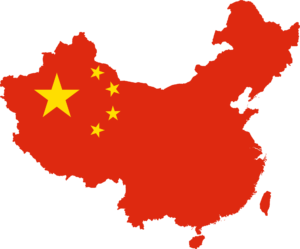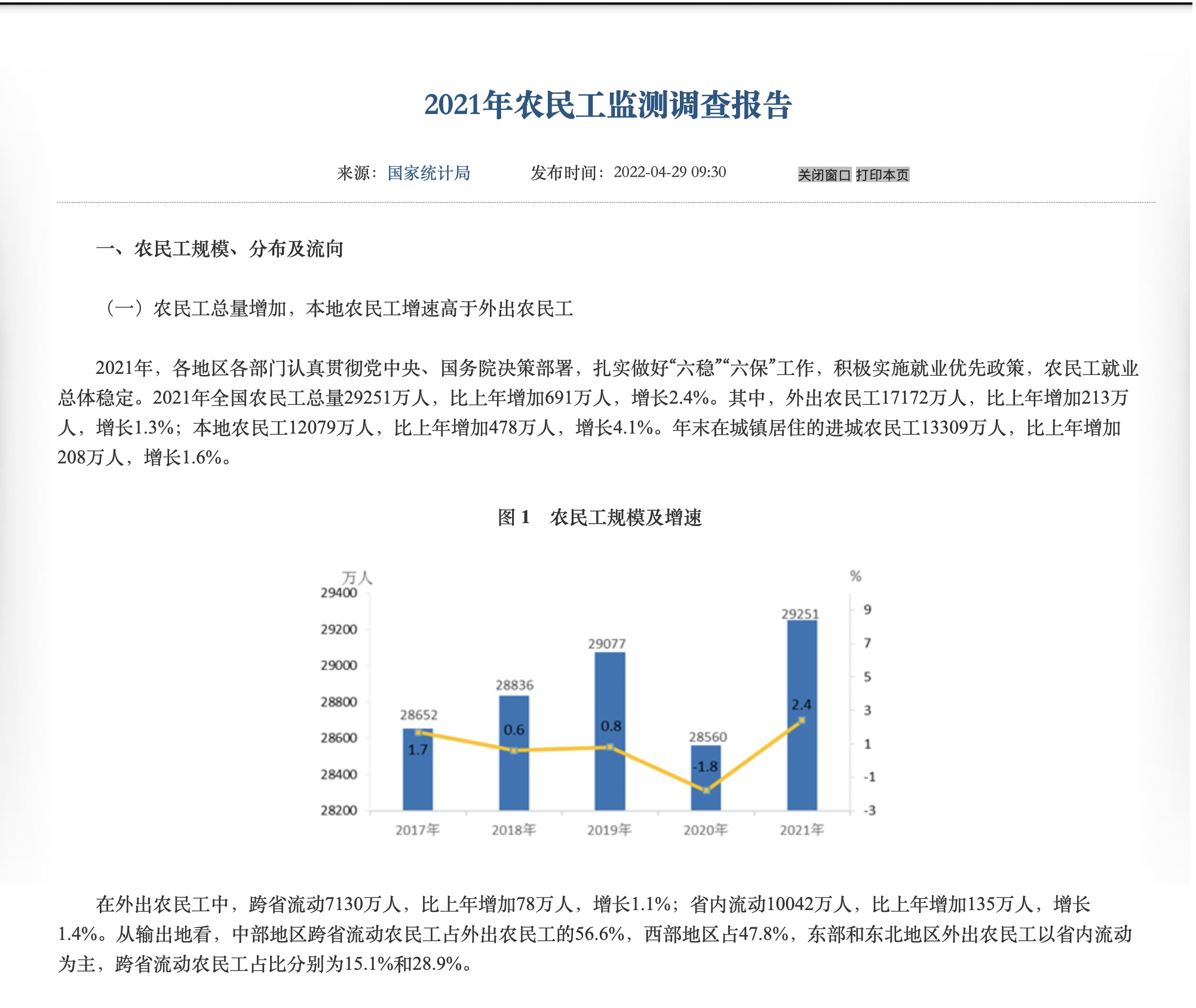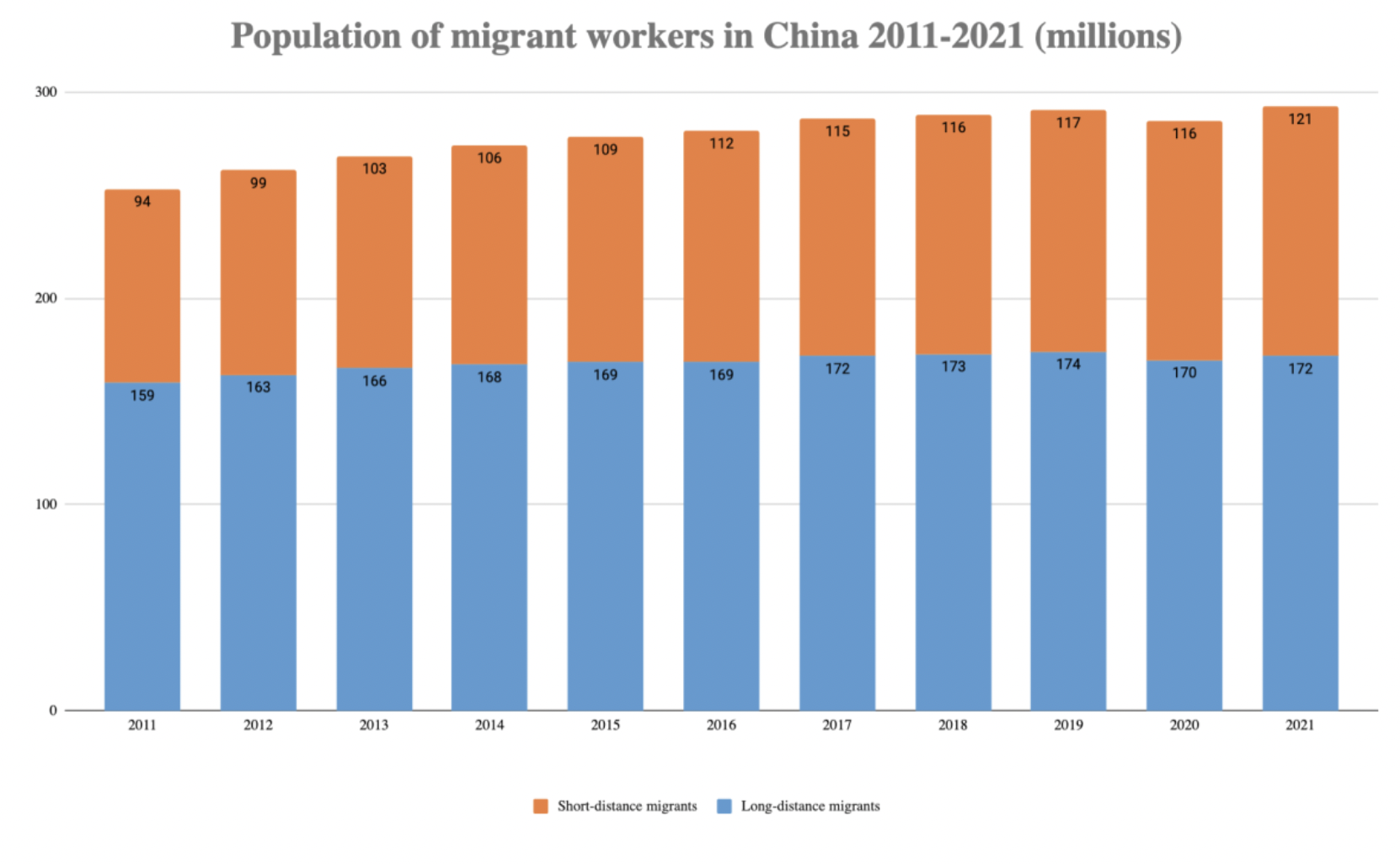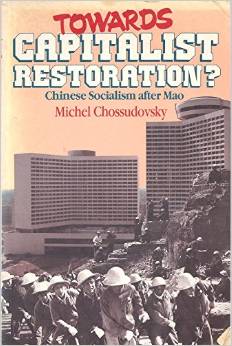“It’s Not Socialism”: China is a Capitalist Cheap Labour Economy, Based on Exceedingly Low Wages
People on the Left Claim the PRC is a Socialist Country.

All Global Research articles can be read in 51 languages by activating the Translate Website button below the author’s name.
To receive Global Research’s Daily Newsletter (selected articles), click here.
Follow us on Instagram and Twitter and subscribe to our Telegram Channel. Feel free to repost and share widely Global Research articles.
First published on January 20, 2022. Minor revisions on January, 22, 2022
Introduction
Most analysts and historians fail to understand that starting in the early 1980s, China had become a full fledged capitalist country. There are powerful US business interests including Big Pharma, major hi-tech companies, banking institutions which are firmly entrenched inside China.
The United States has faithful “allies” within China’s business establishment as well as among academics, scientists, medical doctors who tend to be “pro-American”.
China’s Academy of Sciences (中国科学院), China’s business schools (e.g. Beijing, Dalian, Guangzhou) going back to the early 1980s have ties with Ivy League institutions. Many of them have joint MBA programs, e.g. Shanghai’s Fudan University School of Management with MIT. Stanford has a campus in China as well an agreement with Beijing University, etc.
Another example is Tsinghua University’s School of Journalism’s graduate program which is funded by Bloomberg together with several Wall Street banking institutions.
The interests of powerful Chinese business groups (specifically within the pharmaceutical industry) including China’s billionaires (Forbes List 2022, Forbes New Billionaires) are represented at the highest levels of the Chinese Communist Party (CCP) leadership.
Ironically, these US-China “business alliances” are in starch contrast to the ongoing US-NATO threats directed against the People’s Republic of China, not to mention the various US sponsored acts of destabilization of China’s national economy.
Needless to say there are deep divisions within the CCP leadership.
China and the Geopolitical Chessboard
While China currently plays an important and positive balancing role on the geopolitical chessboard, it is not a “socialist” Nation State.
It is important that people on the Left who describe China as a socialist country take cognizance of the oppressive nature of China’s cheap labour export economy, established in the late 1970s at the outset of the post-Mao Era, in liaison with their US trading and Wall Street investment partners.
Currently, more than one third of the PRC’s labour force are seasonal rural migrant workers who are used as cheap labour in China’s flourishing low wage export economy.
This process of internal migrant labor unfolded with the abolition of the People’s Commune in the 1983 Constitution, which was conducive to the demise of communal ownership coupled with the privatization of agricultural land.
Unlimited Reserves of Cheap Labor: 292 Million Internal Migrant Workers
China has currently, according to official figures 292 million (2021) internal migrant workers employed in the cheap labor export economy, construction and infrastructure projects as well as in the urban services economy. 275 million (2015), 287 million (2017)
According to the Financial Times 2015:
About 275 million [2015], or more than a third of China’s entire labour force, are migrant workers from the countryside, without the right to settle permanently or access the education, pensions or healthcare provided to those with hereditary “urban” status.
These workers –who are largely although not exclusively from rural areas and townships– constitute more than a third of the PRC’s labor force. (See the definition and details concerning the huku passport)
According to official statistics there is an estimated 292 million rural migrant workers in China in 2021, comprising more than one-third of the entire working population. (official statistics)
Source clb.org.hk
A formidable labor force almost the size of the population of the US: 332,403,650 (2022)
China’s 292 million migrant workers (latest 2021 data) also constitute the driving force behind the development of infrastructure, roads and transport corridors not to mention the PRC’s “Belt and Road” Eurasian trade and investment initiatives.
Wages
The average monthly wage of seasonal migrant workers including overtime in 2021 based on (reported and often unreliable and inflated) official statistics was 4,432 RMB (equivalent to US$685).
The official work week without overtime is 44 hours; with overtime it can extend to 11-12 hours a day, 6 days a week.
“A survey of 1,518 migrant workers in 2013 revealed that they spent on average 11 hours at work each day”.
Payment in manufacturing is often on a piece rate basis.
The highest-paid sectors for migrant workers in 2021 were transport and logistics (5,151 yuan per month) and construction (5,141 yuan per month), while those employed in hotel and catering services, and household services, repairs, etc., were the lowest paid, earning just over 3,710 yuan per month
The “996 Work Culture”: 996工作制
What tends to prevail in numerous Chinese mega industrial sweatshops and hi tech assembly lines is the so-called “996 Work Culture” (996工作制) namely working from 9am to 9pm, 6 days a week, 72 hours a week. (almost 300 hours a month) often imposed without overtime pay. A recent study entitled:
“How managers use culture and controls to impose a ‘996’ work regime in China that constitutes modern slavery” by Jenny Jing Wang, 23 July 2020, describes the imposition of 996工作制:
“… as an unrestricted global capitalism and a Confucian culture of hierarchy and obedience … The cases cited involve semi-structured interviews with 11 managers and 19 workers working in the hospitality and manufacturing sectors. The interviews are analysed to determine how managers use controls to exploit power/distance, high levels of insecurity, and unenforced labour rights to impose harsh working conditions. (emphasis added)
Minimum Wages
Currently, Shanghai has the highest monthly minimum wage among 31 provinces (RMB 2,590/US$400 per month) and Beijing has the highest hourly minimum wage (RMB 25.3/US$3.9 per hour). Eight regions – Shanghai, Guangdong, Beijing, Tianjin, Jiangsu, Shandong, Hubei, and Zhejiang – have surpassed the RMB 2,000 (US$308) mark in their monthly minimum wage standards. [does not apply to seasonal migrant workers]
At the lower end of the wage spectrum, Liaoning’s minimum wage level (RMB 1,420/US$224 per month) is slightly higher than that in Anhui (RMB 1,340/US$212 per month).
Social Engineering and the Derogation of Workers Rights. China’s Mega Cheap Labor Factories
See Video below: The so-called largest factory in the World (2009) EUPA is privately owned.
“EUPA runs on Human Sweat Alone”
It produces “Made in China” for export on behalf of numerous foreign businesses. It is located in the Xiamen Special Economic Zone in Fujian Province.
The following 2009 documentary video describes a tendency towards a highly regulated and oppressive social fabric which serves the development of the low wage (profit driven) industrial export economy.
The Confucian ethics of obedience and social subordination of the labor force is the driving force.
Socialists and progressives must acknowledge the nature of this process. China is not a socialist country. Quite the opposite. It is a low wage economy (See Karl Marx on relative and absolute surplus value, wages and the length of the working day, Capital (Book I, Parts IV- VI)
Note: the yellow uniform coincides with the color of the factory. The documentary points to an official 40 hour week and salaries (2009) varying from $90 to $300 dollars a month. These official figures do not include overtime.
More than ten years later, this “mega factory structure” has become a model of Chinese industrial capitalism in major manufacturing areas, including the Southern Guangdong Manufacturing Base, the Greater Shanghai region and Yangtze Delta (140 million people) and the Chongqing mega-industrial region located in Sichuan which has a population in excess of 30 million people.
History of China’s Cheap Labor Economy
In 1978, an “Open Door Policy” was put forth by Deng Xiaoping alongside the launching of China’s Special Economic Zones (SEZ) in Shenzhen and Xiamen and subsequently in major industrial cities.
These early reforms constitute the backbone of China’s cheap labor export economy.
Moreover, while contributing to impoverishing the Chinese people (particularly in rural areas), a large share of the profits of this capitalist growth process has been transferred via international commodity trade to China’s Western business partners.
It is worth noting, however, that the “Open Door” concept was first coined by US Secretary of State John Hay in 1899, as part of a US colonial agenda which consisted in obliging China to open its door to trade “on an equal basis” with the colonial powers.
Moreover, since the abolition of the People’s Commune (1983), agricultural land has in large part been privatized.
People in rural areas largely rely on remittances from migrant employment in the cities and “special economic zones” in manufacturing and construction.
The Socialist Mainstream has casually dismissed to even acknowledge the facts pertaining to land concentration, ownership and the rise of social inequality and the development of a buoyant luxury goods sector for a small privileged social minority.
The Restoration of Capitalism
I will conclude on a personal note.
In 1981-82, based at the University of Hong Kong, Centre for Asian Studies (CAS), I started my research on the process of capitalist restoration in China. This research –which extended over a period of 4 years– included fieldwork in several regions of China (1981-83) focussing on economic and social reforms, analysis of the defunct People’s Commune (abolished in 1983) and the development of (state supported) privately owned capitalist industry including the cheap labor export economy.
I started reviewing Chinese economic history including the structures of the factory system prior to 1949, the development of the treaty ports established in the wake of the Opium wars (1842) and came to the realization that what was being reinstated in terms of the special economic zones, the open door policy had been influenced by the history of the treaty ports, which granted extraterritorial rights to Britain, France, Germany, the US, Russia and Japan.
I completed the manuscript of my book entitled “Towards Capitalist Restoration? Chinese Socialism after Mao” in 1984.
It was casually turned down by the Left: “We unfortunately have no market for a book on this subject”.
The book was published by Macmillan in 1986. Click to download in pdf (free of charge. very slow due to size of file)
About the Author
Michel Chossudovsky is an award-winning author, Professor of Economics (emeritus) at the University of Ottawa, Founder and Director of the Centre for Research on Globalization (CRG), Montreal, Editor of Global Research.
He has undertaken field research in Latin America, Asia, the Middle East, sub-Saharan Africa and the Pacific and has written extensively on the economies of developing countries with a focus on poverty and social inequality. He has also undertaken research in Health Economics (UN Economic Commission for Latin America and the Caribbean (ECLAC), UNFPA, CIDA, WHO, Government of Venezuela, John Hopkins International Journal of Health Services (1979, 1983)
He is the author of 13 books including The Globalization of Poverty and The New World Order (2003), America’s “War on Terrorism” (2005), The Globalization of War, America’s Long War against Humanity (2015).
He is a contributor to the Encyclopaedia Britannica. His writings have been published in more than twenty languages. In 2014, he was awarded the Gold Medal for Merit of the Republic of Serbia for his writings on NATO’s war of aggression against Yugoslavia. He can be reached at [email protected]
See Michel Chossudovsky, Biographical Note
Michel Chossudovsky’s Articles on Global Research





